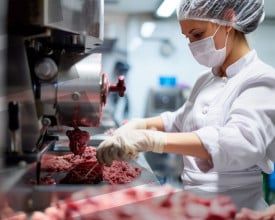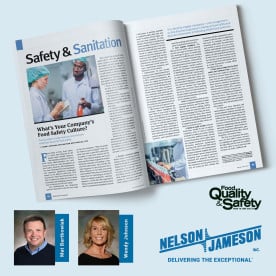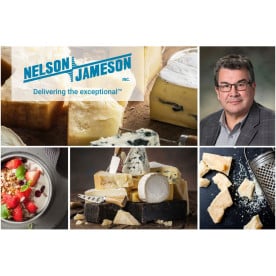Monthly Archives: July 2020
- July 20, 2020
Have you ever missed one or two of your normal tooth-brushing sessions, and found your tongue traversing over a disconcertingly slimy layer coating your chompers? Well, welcome to the disturbing and quite fascinating world of biofilms. These hearty amalgams of microbiological activity provide both protection for microorganisms, as well as headaches for not only those avoiding plaque build-up, but most importantly for this blog, the food industry (allowing harborage and protection for bacteria and fungi).
Biofilms can form on a variety of surfaces in food processing environments, including stainless steel. A supercell of harborage, “Biofilms are complex microbial ecosystems formed by one or more species immersed in an extracellular matrix of different compositions depending on the type of food manufacturing environment and the colonizing species” (Geaile, et al). The
- July 14, 2020
To craft cheeses with precise flavors and textures tailored to specific markets, cheesemakers must carefully select cultures, adjuncts, and coagulants. The choice of coagulant is particularly crucial for cheeses like pasta filata, cheddar, and continental varieties, where texture, sliceability, and shredability significantly impact productivity and profitability. Selecting a coagulant enzyme with low proteolytic activity, specifically targeting k-casein, enhances texture, moisture distribution, and sliceability, leading to reduced waste during slicing. Coagulants also play a pivotal role in flavor development by supporting cheese ripening and preventing the hydrolysis of β-caseins, avoiding bitter off-flavors. dsm-firmenich Ingredients, through products like Delvo®Cheese starter cultures and Delvo®ADD adjuncts, provides cheesemakers with the tools to optimize texture and taste, meeting the demands of diverse markets. Maxiren® and Fromase® from dsm-firmenich cater to
- July 01, 2020
Summer is here! What a perfect opportunity to get outside and enjoy the warm summer air we've all been craving! For some individuals, spending time outdoors could involve hiking, boating, or reading in the shade, but one thing we can all agree on, summer is the perfect time to enjoy some of our favorite foods on the grill. Whether with family, friends, or even coworkers, cooking food on the grill appears to be a popular summer activity. With summer holidays approaching, like the Fourth of July, it is important to keep your celebrations healthy and safe by following food safety tips to prevent contamination while grilling.
According to the FDA and the USDA Food Safety organizations





